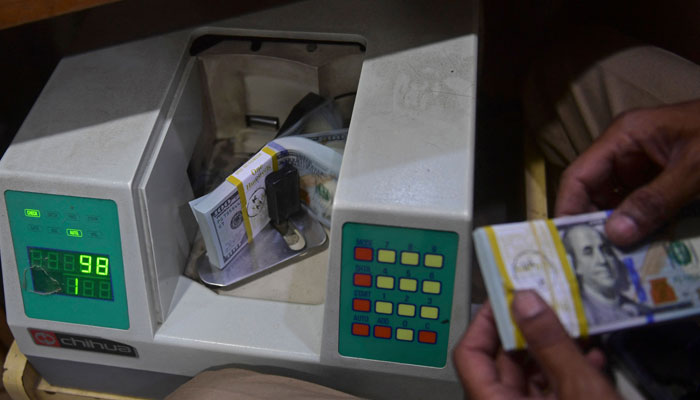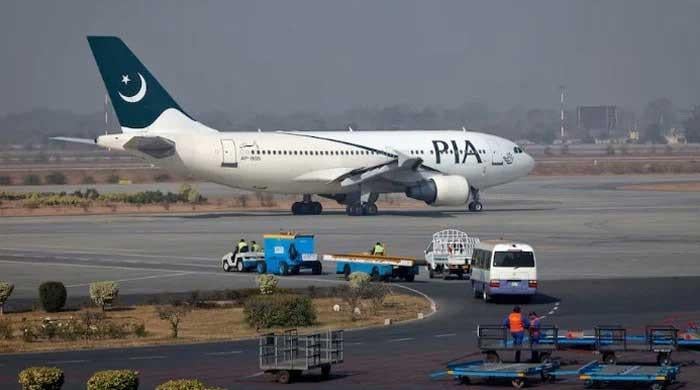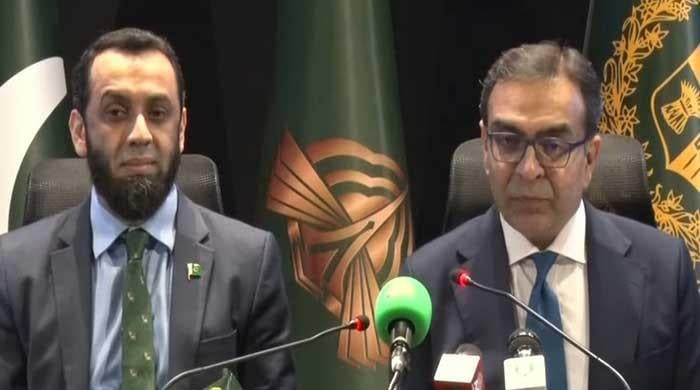Rupee continues to lose steam, crosses 192-mark
Rupee closes the week at 192.53 against the US dollar with a loss of 0.76%
May 13, 2022

- Rupee closes the week at 192.53 against the US dollar.
- Slide of rupee was weighed down by surging trade deficit, dwindling foreign exchange reserves.
- Analyst says if political crisis prolongs, the “situation will get out of hand”.
KARACHI: The downtrend in the Pakistani rupee continued Friday as the currency fell by nearly Re1 against the US dollar in the interbank market on the back of uncertainty over the resumption of the International Monetary Fund's (IMF) loan programme and shrinking foreign exchange reserves.
The rupee was trading at Rs193 during the intraday, however, at close the current settled at Rs192.53 with a loss of Rs0.76 or 0.4%.
The slide of the local unit was weighed down by a surging trade deficit, dwindling foreign exchange reserves — that dropped to their lowest level since December 2019 — and a delay in the release of the IMF tranche.
Speaking to Geo.tv, Exchange Companies Association of Pakistan (ECAP) Chairman Malik Bostan said that the widening trade deficit and political uncertainty are adding pressure on the dwindling rupee.
“When the new government took charge, the rupee recovered to Rs181 from a record high-level of Rs189; however, after ousted prime minister Imran Khan announced to hold a long march, the rupee once again broke all records,” he said.
Political unrest owing to PTI’s protest campaign against the government is eclipsing the new economic team’s focus on economic firefighting. Former prime minister Imran Khan has announced to march with millions of his supporters towards Islamabad after May 20 to demand new elections to add to the troubles of the economically-challenged PML-N led regime.
Bostan maintained that if the political crisis prolongs, the “situation will get out of hand”.
Regarding IMF, the analyst added that talks with the Fund are very important and the government needs to take some tough decisions to revive the stalled programme.
The market is also eyeing the outcome of Prime Minister Shehbaz Sharif and top PML-N leaders’ meeting with the party supremo Nawaz Sharif in London for any clues on when the new government would withdraw energy subsidies to restart IMF loan negotiations on May 18, and whether it will agree to announce fresh elections or not.
“The State Bank of Pakistan [SBP] also needs to take action to control the free fall of the Pakistani rupee,” he said, adding that the rupee rate cannot be determined by the demand and supply regime.
He also maintained that the rupee-dollar parity would also improve if Imran Khan decided to take back his long march call. “The new government should focus on fixing the economic situation rather than being involved in political debates with the former PTI-led government,” he said.
The analyst predicted that the dollar value would move up to the 195-mark; however, its value will decline significantly later.
Rising dollar triggers blame game
Taking to his Twitter, PTI chairman and former prime minister Imran Khan highlighted that the rupee was at an all-time low of Rs193 [per dollar] (from Rs178 per dollar on March 8); interest rates at 15% highest since 1998; stock market down 3,000 points or 6.4%; stock market lost Rs604 billion capitalisation; inflation 13.4% — highest since January 2020. “Reflects lowest ever confidence in imported government,” he wrote.
“The market [is] awaiting policy [and] action, which [the] imported government has failed to provide. Both myself [and] Shaukat Tareen had warned the "neutrals" that if conspiracy succeeded our fragile economic recovery would go into a tailspin. That is what has now happened,” he added.
Meanwhile, former information minister Fawad Chaudhry criticised the new government for ignoring the economic crisis. “While the so-called government leaders are sitting in London, the US dollar has surpassed 193 […] this drama should end and the government should announce elections,” he wrote.
Replying to his criticism, Information Minister Marriyum Aurangzeb said that the dollar touched an "all-time high of Rs193 because of Imran Khan".
“Imran Khan signed the IMF agreement and the people of Pakistan [were] suffering due to high inflation,” she said, blaming Imran Khan for causing economic instability in the country.
Taking a jibe at the former premier, she said: “Imran Khan, who was the reason behind rising inflation, is now calling out the new government because of it. Imran Sahib don't make noise, instead, give an account for the economic catastrophe that you have created.”
Foreign exchange reserves fall to alarming level
It is worth mentioning that due to increasing current account and trade deficits, higher external debt payments and dried dollar inflows, Pakistan's foreign exchange reserves dropped to their lowest level since December 2019.
According to data released by the SBP, inflows clocked in at $16.4 billion in the week that ended May 6, from $16.5 billion a week earlier.
The country’s reserves declined by $178 million or 1.1% on a week-on-week basis to stand at $16.376 billion, the central bank data showed. The central bank reserves also fell to a 23-month low.
The SBP reserves decreased by $190 million to $10.308 billion and it attributed the decline in reserves to outflows related to external debt repayments. Analysts estimate the SBP's latest reserves can cover imports for 1.54 months.
The reserves of commercial banks, however, inched up to $6.067 billion from $6.054 billion. Soaring twin deficits (current account and trade), lack of foreign currency inflows, and increasing foreign debt servicing obligations led to the fast depletion of forex reserves.
The falling reserves put pressure on the currency as it plunged to an all-time low in the interbank market.









